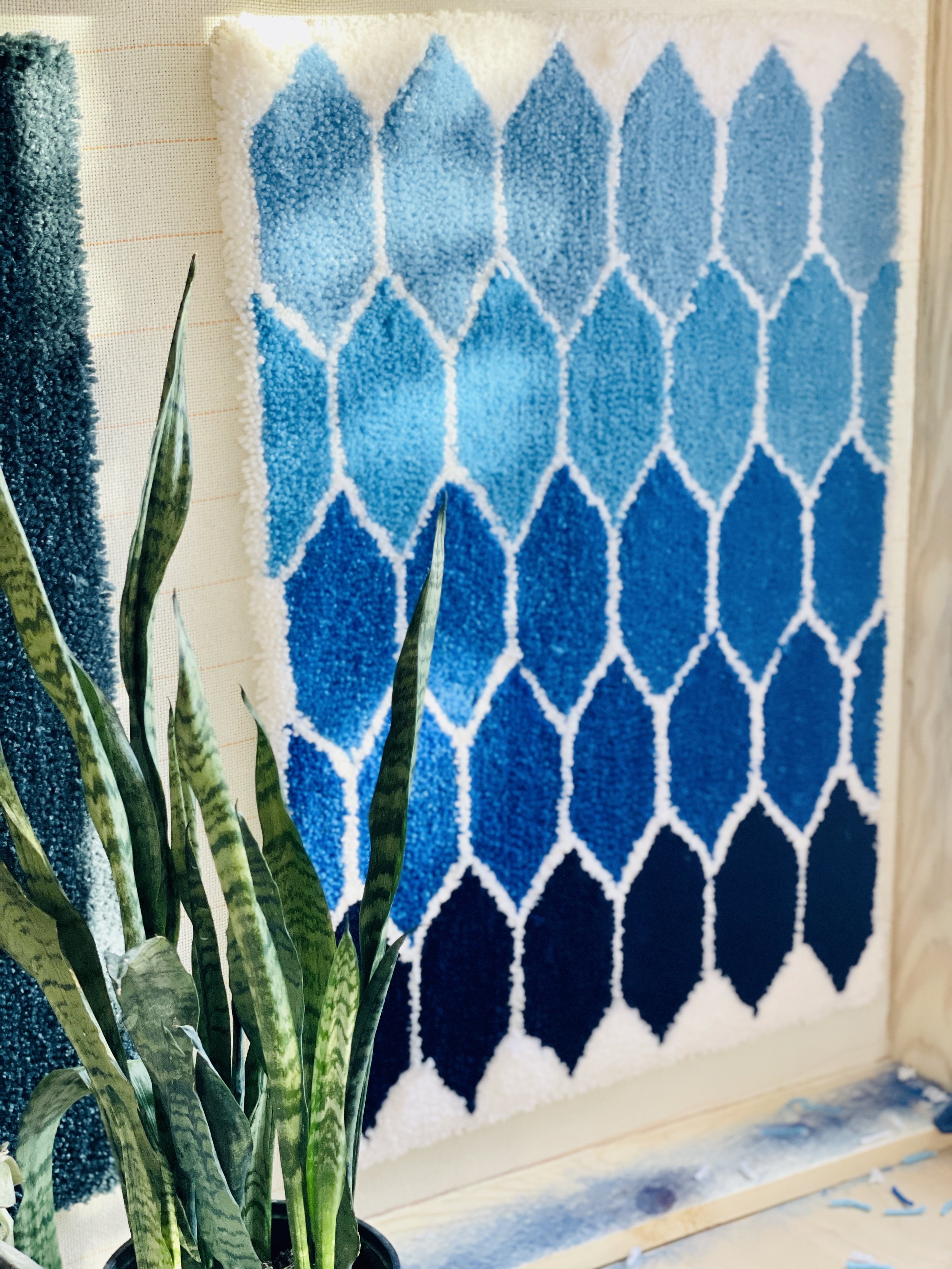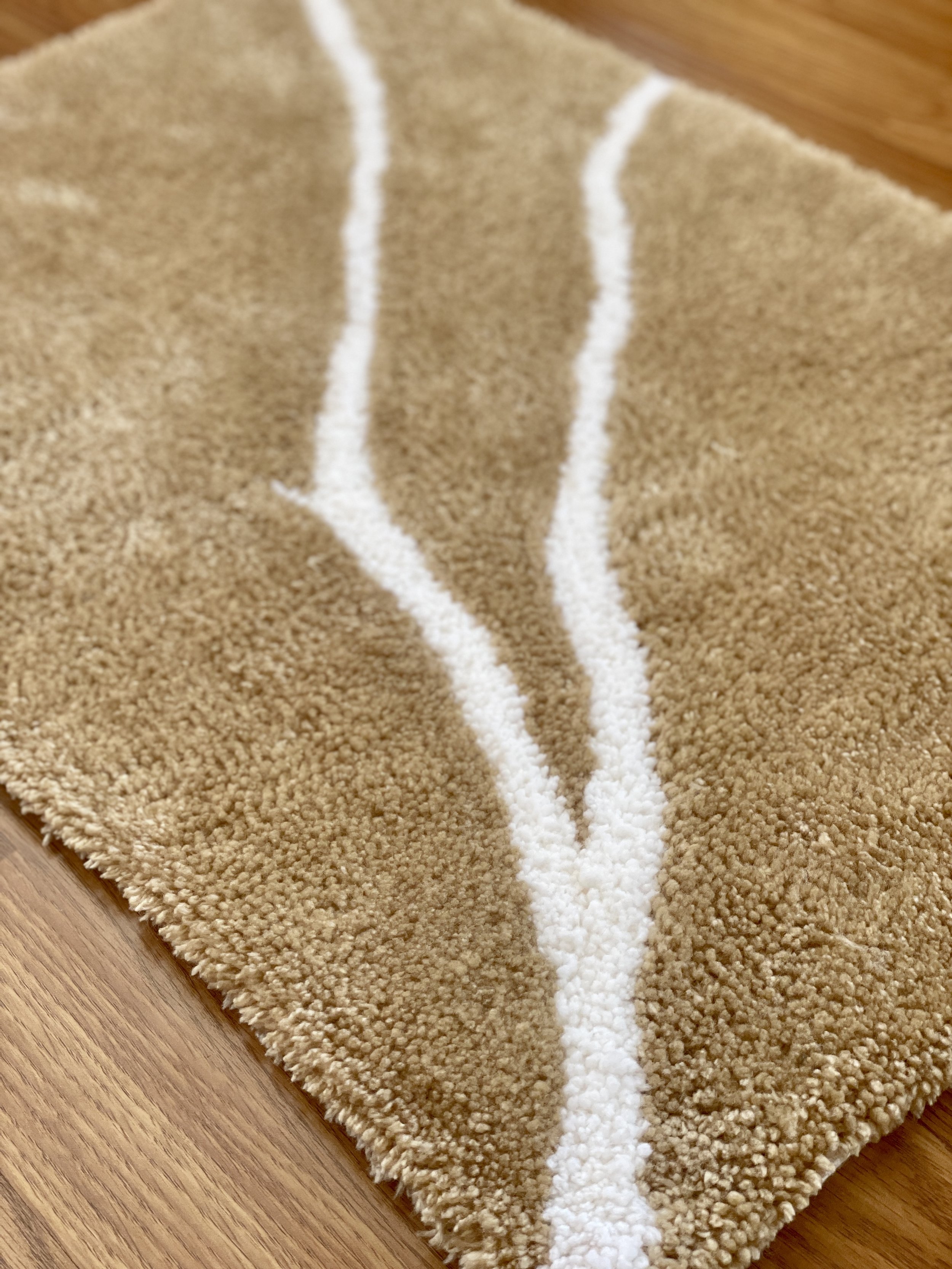Five Things That Learning a New Craft Has Been Teaching Me
At the end of 2022, a friend suggested I look into rug tufting. As a weaver, making rugs is something that already interests me. Also as a weaver, I know that weaving a rug requires 20-30 hours of work at my tapestry loom, investment in durable fibers, and acceptance that the final destination of this painstakingly woven item is the floor, where it will be walked all over.
I searched rug tufting on TikTok and was instantly intrigued. I ordered myself a starter kit from Tuft the World and waited patiently for it to arrive. When it did, I initially felt both excited and daunted. Yes, rug tufting is a fiber art, which is familiar to me, and yes, the outcome is rugs, which are also familiar to me. Yet everything about the process and tools was brand new to me. It felt like starting from scratch.
Here are some of the things that I’ve learned during the past two months as a weaver learning a brand new form of fiber art.
Rug tufting requires a totally different energy than weaving. Weaving is calm, slow, quiet, and relaxed. It typically involves sitting for long periods of time, sometimes taking an hour to move a few inches up the warp strings of whatever it is I’m making. I listen to podcasts or audiobooks, and in the evenings watch TV on a streaming service on my laptop.
Rug tufting is noisy, mechanized, and fast–sometimes so fast I feel like I can’t keep up with the pace of the tufting gun. I typically stand while I work, as the tufting frame, which holds the material tight, is clamped to a table or desk, and to hold the gun at the proper angle I need to be able to move easily. I find myself listening to pop music on headphones (to be able to hear over the sound of the gun!) while I tuft, dancing through the frustration of tangled yarn or losing control of the gun around a curve. This difference in energy means that I usually rug tuft during the day, and often feel physically drained afterward, whereas weaving is usually quite restful.
Rug tufting uses a lot of materials. Making just one welcome-mat-sized rug uses an entire 1 pound skein of acrylic yarn. That is a TON of yarn for one project! Since a lot of the wool and natural fibers I use for weaving come in much smaller quantities at higher costs, I opted to start my tufting journey with acrylic yarn from a chain craft store. It is hardy enough to make a durable rug, has fun bright colors, and comes in massive quantities. I thought I had purchased a comical amount of yarn to get started that would take ages to tuft through, but I was wrong!
In addition to using a lot of yarn, the backing material (through which the tufting gun shoots the yarn) and finishing supplies (carpet glue, non-slip felt backing, spray adhesive) requires a big financial investment and ongoing cost.
So with weaving, the primary investment comes in time, whereas with tufting, the primary investment comes in materials.
I am so tempted to rush the process. I’ve been weaving for about four years, and my woven work reflects that time and endless hours of practice at the loom. I’ve been tufting for about two months, and find myself occasionally frustrated when I don’t know the direction to take with a design, or a rug doesn’t look quite right or as advanced as I’d like it too.
I have to remind myself that it makes perfect sense that my tufting isn’t at the same level as my weaving, considering I haven’t put in even close to the amount of time. The only way to grow is to keep showing up, keep trying things, and keep seeing what works and what doesn’t. Every new rug I make I show up to the frame with a question–is this design possible? will these colors look right?–and the only way to answer that question is to thread up the tufting tool and just begin.
Rug tufting opens up a world of possibilities for my craft and my business. Because weaving a rug takes 20-30 hours, the price I’d have to ask for them to make any sort of profit on would be quite high and potentially inaccessible to my audience. Knowing that, I often end up not charging enough for my larger woven pieces (another topic entirely!).
With a tufting gun in hand, I can create an 18 x 24 inch, welcome-mat sized rug in around 4 hours. (The finishing process adds a few more.) I can create and sell large items at a comparably low cost to what I need to price my weavings at. And I can make more of them!
It is also a brand new offering to present to my wonderful loyal supporters who have bought many wall hangings and coasters from me over the years, and might be in the market for something new like a completely unique, lush tufted rug.
It potentially opens up the possibility of wholesale, which I just haven’t figured out how to incorporate into my weaving business. I still price my woven work too close to wholesale price on my own website, so handing it over for 50% of that price for a shop or gallery to sell is untenable, no matter how much I’d like to.
Since tufting requires less time and I think will be more clearcut to price, the potential for doing some limited wholesale is on the horizon, which I am thrilled about!
As a full-time artist, taking time and financial resources to start something completely new is a risk.
I’ve been talking with my dear friend and Grand Marais potter Hannah Palma about this a lot. As full-time artists who are known for one thing (for me, weaving), to take a step back from the thing we know is working to spend our time and financial resources on something completely new that takes time to learn and grow and may or may not pay off in the long run is a big risk. Selling my art is how I buy groceries, feed Aurora, pay bills, and invest back into supplies to make more art. I sell art by making art, which takes time, and then sharing it and advocating for it, which also takes time. So to take precious hours and days away from weaving to invest it in learning something new is intimidating.
And yet, I always want to follow my creative intuition, because that’s what led me to weaving in the first place. I will always listen to my gut, stretch myself to learn new things if that’s what it’s telling me, and trust that I am on the right path if I am pursuing what lights me up. Otherwise, what in the world am I doing this for?
My first collection of tufted rugs will be available Sunday, February 26 at 7 pm! Subscribe to my email list for early access starting at 6 pm Central Time.




